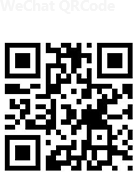laser welding machine, cutting machine, marking machine manufacturer
-
 +86 0755-89302056
+86 0755-89302056 -
 Building 6, Jingneng science and technology environmental protection industrial park, No. 3, Baolong Second Road, Longgang District
Building 6, Jingneng science and technology environmental protection industrial park, No. 3, Baolong Second Road, Longgang District
Laser displacement sensor helps upgrade automatic focusing technology of laser welding 1
Compared with traditional ultrasonic sensors, laser displacement sensors are slightly better in terms of speed, accuracy and application range. Even the technical complexity of laser displacement sensors does not affect their good application prospects. With the continuous development of electronic technology , its application scope has also been continuously expanded, such as: used in new energy manufacturing industries such as laser welding and laser cutting to achieve precise geometric measurements of displacement, thickness, vibration, distance, diameter, length and height, etc.
1. Principle of laser displacement sensor
Let me first share with you a schematic diagram of a laser displacement sensor. Generally, the basic principle used by laser displacement sensors is optical triangulation:
The semiconductor laser ① is focused onto the measured object ⑥ by the lens ②. The reflected light is collected by the lens ③ and projected onto the CMOS array ④; the signal processor ⑤ calculates the position of the light spot on the array ④ through trigonometric functions to obtain the distance from the object.
According to the measurement principle, laser displacement sensors are divided into laser triangulation method and laser echo analysis method. Laser triangulation method is generally suitable for high-precision, short-distance measurement, while laser echo analysis method is used for long-distance measurement. They are introduced below. Principles of laser triangulation and laser echo analysis.
1. Laser displacement sensor principle and laser triangulation method principle
The laser transmitter emits visible red laser light to the surface of the object to be measured through the lens. The laser light reflected by the object passes through the receiver lens and is received by the internal CCD linear camera. Depending on the distance, the CCD linear camera can "see" at different angles. "This point of light. Based on this angle and the known distance between the laser and the camera, the digital signal processor can calculate the distance between the sensor and the object being measured.
At the same time, the beam is processed by analog and digital circuits at the position of the receiving element, and analyzed by the microprocessor to calculate the corresponding output value, and output the standard data signal proportionally within the analog window set by the user. If switching output is used, it will be turned on within the set window and cut off outside the window. In addition, the detection windows can be set independently for analog and switching outputs.
The maximum linearity of the laser displacement sensor using the triangulation method can reach 1um, and the resolution can reach the level of 0.1um. For example, the ZLDS100 type sensor can achieve 0.01% high resolution, 0.1% high linearity, 9.4KHz high response, and can adapt to harsh environments.
2. Laser displacement sensor principle and laser echo analysis principle
Laser displacement sensors use the principle of echo analysis to measure distance to a certain degree of accuracy. The sensor is internally composed of a processor unit, an echo processing unit, a laser transmitter, a laser receiver and other parts. The laser displacement sensor emits one million laser pulses per second to the detection object through the laser transmitter and returns to the receiver. The processor calculates the time required for the laser pulse to encounter the detection object and return to the receiver to calculate the distance value. , the output value is the average output of thousands of measurement results. It is measured by the so-called pulse time method. The laser echo analysis method is suitable for long-distance detection, but the measurement accuracy is lower than the laser triangulation method, and the longest detection distance can reach 250m.
Tel:+86 0755-89302056
+86 0755-85200585
Address:Building 6, Jingneng science and technology environmental protection industrial park, No.3, Baolong Second Road, Longgang District. Shenzhen.China




